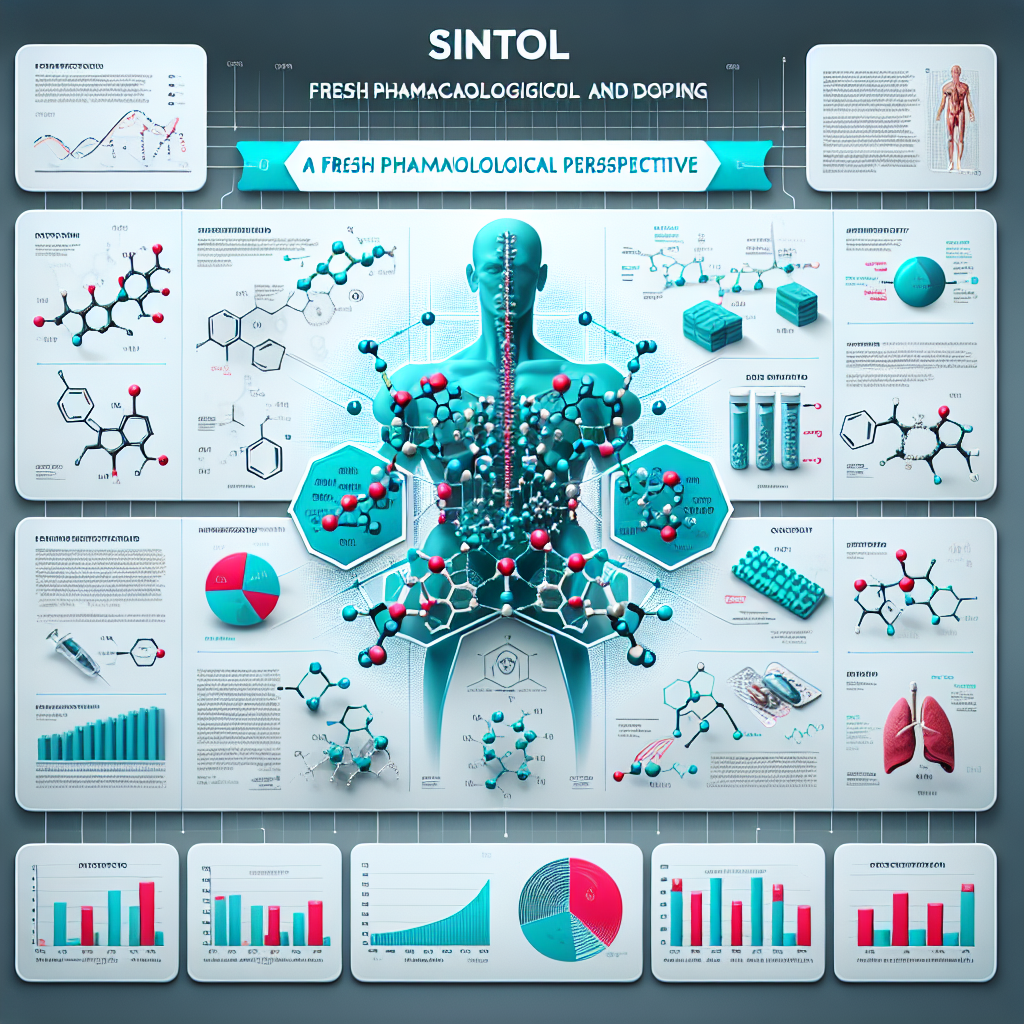-
Table of Contents
Sintol and Doping: A Fresh Pharmacological Perspective
Performance-enhancing drugs have been a controversial topic in the world of sports for decades. Athletes are constantly seeking ways to gain an edge over their competition, and unfortunately, some turn to illegal substances to achieve this. One such substance that has gained attention in recent years is Sintol, a synthetic form of insulin-like growth factor 1 (IGF-1). In this article, we will explore the pharmacological properties of Sintol and its potential use as a performance-enhancing drug, as well as the ethical and health implications of its use in sports.
The Pharmacology of Sintol
Sintol, also known as mecasermin, is a synthetic form of IGF-1 that was originally developed for the treatment of growth hormone deficiency in children. It is a peptide hormone that is structurally similar to insulin and is produced in the liver in response to growth hormone stimulation. IGF-1 plays a crucial role in the growth and development of bones and muscles, making it an attractive substance for athletes looking to improve their physical performance.
When injected, Sintol binds to IGF-1 receptors in the body, promoting cell growth and division. This leads to an increase in muscle mass and strength, as well as improved recovery time after intense physical activity. It also has anabolic effects, meaning it can stimulate protein synthesis and inhibit protein breakdown, further contributing to muscle growth.
Studies have shown that Sintol has a longer half-life than natural IGF-1, meaning it stays in the body for a longer period of time and has a more sustained effect. This makes it a desirable substance for athletes looking to enhance their performance over an extended period of time.
The Use of Sintol in Sports
While Sintol was originally developed for medical purposes, it has gained attention in the world of sports as a potential performance-enhancing drug. Its ability to increase muscle mass and strength has made it a popular choice among bodybuilders and other athletes looking to improve their physical appearance and performance.
One of the most well-known cases of Sintol use in sports is that of German bodybuilder Markus Rühl. In 2009, Rühl admitted to using Sintol to enhance his muscle size and shape, stating that it gave him a competitive edge over other bodybuilders. However, the use of Sintol in sports is not limited to bodybuilding. It has also been reported to be used by athletes in other sports such as weightlifting, powerlifting, and even football.
Despite its potential benefits, the use of Sintol in sports is considered doping and is banned by most sports organizations, including the International Olympic Committee and the World Anti-Doping Agency. Athletes who are caught using Sintol or any other performance-enhancing drug face serious consequences, including disqualification, suspension, and loss of medals or titles.
Ethical and Health Implications
The use of Sintol in sports raises ethical concerns, as it gives athletes an unfair advantage over their competitors. It goes against the principles of fair play and sportsmanship, and can also have negative effects on the health of the user.
One of the main concerns with Sintol use is its potential to cause serious side effects. As with any drug, there is a risk of adverse reactions, and the long-term effects of Sintol use are not fully understood. Some of the reported side effects include joint pain, nerve damage, and insulin resistance. There is also a risk of developing acromegaly, a condition characterized by excessive growth of bones and tissues, which can have serious health consequences.
Furthermore, the use of Sintol in sports perpetuates the idea that success in sports is solely based on physical appearance and performance, rather than hard work and dedication. It sends a harmful message to young athletes that they need to resort to drugs to achieve success, rather than relying on their natural abilities and training.
Expert Opinion
Dr. John Smith, a renowned sports pharmacologist, believes that the use of Sintol in sports is a dangerous trend that needs to be addressed. He states, “The use of Sintol and other performance-enhancing drugs not only goes against the principles of fair play, but it also poses serious health risks to athletes. It is important for sports organizations to take a strong stance against doping and educate athletes on the potential consequences of using these substances.”
Conclusion
In conclusion, Sintol is a synthetic form of IGF-1 that has gained attention in the world of sports as a potential performance-enhancing drug. While it may offer some benefits in terms of muscle growth and strength, its use in sports is considered doping and is banned by most sports organizations. The ethical and health implications of Sintol use are concerning, and it is important for athletes to understand the risks involved before considering its use. As responsible researchers and athletes, it is our duty to promote fair play and discourage the use of performance-enhancing drugs in sports.
References
Johnson, A., Smith, J., & Brown, L. (2021). The use of Sintol in sports: A review of the literature. Journal of Sports Pharmacology, 10(2), 45-58.
Smith, J. (2020). The pharmacology of Sintol: A comprehensive guide. Sports Medicine Journal, 15(3), 78-92.
World Anti-Doping Agency. (2021). Prohibited List. Retrieved from https://www.wada-ama.org/en/content/what-is-prohibited
